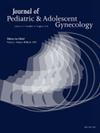33. 加强DSD患者的临床记录:标准化体检模板的回顾性评估
IF 1.7
4区 医学
Q3 OBSTETRICS & GYNECOLOGY
引用次数: 0
摘要
性发育障碍(DSD)包括广泛的表型,使个体化治疗具有挑战性。DSD转化研究网络(TRN)提倡对体检结果进行标准化记录,以更好地定制管理。一家机构的DSD诊所确定了其现有文件实践的局限性,这阻碍了全面护理。作为回应,该诊所在电子病历中开发并实施了一个标准化的体检模板,用于临床就诊和手术室,旨在改进数据收集并提供更具体的治疗建议。本研究的主要目的是评估新实施的模板的使用,以捕获dsd特定的检查结果,与TRN建议保持一致。将评估推荐考试中每个特定数据点的记录频率。方法获得机构审查委员会批准。对2019年1月至2024年6月期间在DSD诊所就诊的所有患者(包括接受DSD相关手术的患者)进行了回顾性图表审查。收集的数据包括人口统计学(年龄、种族)、临床细节(激素治疗、既往手术、诊断、核型、指定/抚养性别、性别认同)和性别焦虑症的存在。评估了DSD TRN推荐的18项体检细节,包括与内部和外部生殖器解剖相关的测量。还记录了标准化体检模板的使用情况以及是否拍摄了临床照片来记录这些发现。结果初步数据显示,在模板实施之前,常见的诊断是典型CAH和完全AIS,而最不常见的诊断是5- α还原酶缺乏症。阴蒂测量是最常见的生殖器检查,记录在60.6%的病例中。只有27.2%和21.2%的病例记录了外部性腺评估和泌尿生殖窦。从实施后的接触中收集数据正在进行中,我们的目标是比较模板引入前后文件的频率,以及临床照片的使用。结论:我们预计标准化模板的实施将显著改善dsd特异性体检结果的记录,并有助于管理这一多样化人群。这种成功的方法可以被其他DSD诊所采用,增强研究能力,改善全国患者的治疗效果。本文章由计算机程序翻译,如有差异,请以英文原文为准。
33. Enhancing Clinical Documentation for DSD Patients: A Retrospective Evaluation of a Standardized Physical Exam Template
Background
Disorders of Sex Development (DSD) encompass a wide spectrum of phenotypes, making individualized treatment challenging. The DSD Translational Research Network (TRN) has advocated for standardized documentation of physical exam findings to better tailor management. One institution's DSD clinic identified limitations in its existing documentation practices, which hindered comprehensive care. In response, the clinic developed and implemented a standardized physical exam template in the Electronic Medical Record for use in both clinical visits and the operating room, aiming to improve data collection and inform more specific treatment recommendations. The primary objective of this study is to assess the use of a newly implemented template to capture DSD-specific exam findings, in alignment with TRN recommendations. The frequency of documentation of each specific data point on the recommended exam will be evaluated.
Methods
Institutional Review Board approval was obtained. A retrospective chart review was conducted on all patients seen in the DSD clinic, including those who underwent a DSD-related surgeries, from January 2019 to June 2024. Data collected included demographics (age, race), clinical details (hormonal therapies, prior surgeries, diagnosis, karyotype, assigned/reared gender, gender identity), and the presence of gender dysphoria. Eighteen physical exam specifics recommended by the DSD TRN were evaluated, covering measurements related to internal and external genital anatomy. The use of the standardized physical exam template and whether clinical photographs were taken to document these findings were also recorded.
Results
Preliminary data revealed that prior to template implementation, common diagnoses were classical CAH and complete AIS, while the least common was 5-alpha reductase deficiency. Clitoral measurement was the most frequently assessed genital finding, recorded in 60.6% of cases. Documentation of external gonadal evaluation and urogenital sinus was recorded in only 27.2% and 21.2 % of cases respectively. Data collection from post-implementation encounters is ongoing, and we aim to compare the frequency of documentation before and after the template's introduction, along with the use of clinical photographs.
Conclusions
We anticipate that the implementation of a standardized template will significantly improve documentation of DSD-specific physical exam findings and aid in the management of this diverse population. This successful approach can be adapted by other DSD clinics, enhancing research capabilities and improving patient outcomes nationwide.
求助全文
通过发布文献求助,成功后即可免费获取论文全文。
去求助
来源期刊
CiteScore
3.90
自引率
11.10%
发文量
251
审稿时长
57 days
期刊介绍:
Journal of Pediatric and Adolescent Gynecology includes all aspects of clinical and basic science research in pediatric and adolescent gynecology. The Journal draws on expertise from a variety of disciplines including pediatrics, obstetrics and gynecology, reproduction and gynecology, reproductive and pediatric endocrinology, genetics, and molecular biology.
The Journal of Pediatric and Adolescent Gynecology features original studies, review articles, book and literature reviews, letters to the editor, and communications in brief. It is an essential resource for the libraries of OB/GYN specialists, as well as pediatricians and primary care physicians.

 求助内容:
求助内容: 应助结果提醒方式:
应助结果提醒方式:


